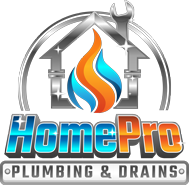Exploring Three Types of Plumbing Systems
Plumbing systems are the unsung heroes of modern infrastructure, silently working behind the scenes to ensure our homes
and buildings function smoothly. From supplying clean water to removing waste, plumbing plays a crucial role in
maintaining hygiene and convenience. Understanding the different types of plumbing systems can help homeowners,
contractors, and enthusiasts grasp the complexities and nuances of this essential infrastructure.
Section on Potable Water Supply System
The potable water supply system is responsible for delivering clean and safe drinking water to households and commercial
buildings. This system starts from the main water supply line, typically connected to a municipal water source or private
well. From there, water is distributed throughout the building via a network of pipes, valves, and fixtures.
Key Components of Potable Water Supply:
- Main Water Supply Line: Primary pipe that brings water into the building from the source.
- Water Meter: Measures the amount of water consumed for accurate billing.
- Pressure Regulator: Maintains consistent water pressure.
- Pipes and Fittings: Connects the main supply line to various fixtures.
- Fixtures: Includes faucets, sinks, toilets, and other appliances.
Functionality of Potable Water Supply:
The potable water supply system operates under pressure to ensure that water reaches all fixtures with adequate force.
Valves throughout the system allow for control and maintenance.
Maintenance of Potable Water Supply:
Regular maintenance, including inspections for leaks and water pressure checks, helps prevent damage and ensure efficiency.
Section on Drainage and Vent System
The drainage and vent system removes wastewater and gases safely to the outside environment. This system prevents foul odors,
backups, and contamination while maintaining proper airflow.
Key Components of Drainage and Vent System:
- Drain Pipes: Collect wastewater and transport it away from the building.
- Traps: Curved sections of pipe that retain a small amount of water to prevent sewer gases from entering.
- Vent Pipes: Allow air to enter the drainage system for proper airflow.
- Cleanouts: Access points for inspection and cleaning.
- Sewer Line: Carries wastewater to the municipal sewer system or septic tank.
Functionality of Drainage and Vent System:
The drainage and vent system relies on gravity to move wastewater, while vent pipes ensure proper air circulation to avoid
vacuum formation and water siphoning.
Maintenance of Drainage and Vent System:
Regular inspection, cleaning of traps, and clearing of blockages are essential to prevent backups and ensure proper functioning.
Section on Gas Plumbing System
Gas plumbing systems deliver natural gas or propane to appliances like water heaters and furnaces. Safety is crucial to prevent
leaks and hazards.
Key Components of Gas Plumbing System:
- Gas Supply Line: Brings natural gas or propane from the utility service or storage tank.
- Shut-off Valve: Allows for manual interruption of gas flow in emergencies.
- Appliance Connectors: Connect gas supply lines to individual appliances for easy installation.
- Regulators: Control and maintain gas pressure for safety and efficiency.
Functionality of Gas Plumbing System:
Gas plumbing systems operate under pressure to deliver fuel to appliances for combustion. Proper installation and
maintenance are crucial to prevent gas leaks.
Maintenance of Gas Plumbing System:
Regular inspection and leak detection tests are essential to ensure safety and reliability.
Conclusion:
Understanding the different types of plumbing systems is essential for homeowners, contractors, and professionals involved
in the construction and maintenance of buildings. Each system plays a vital role in ensuring safety and comfort.

